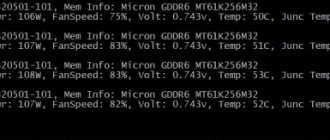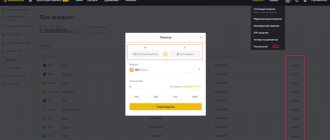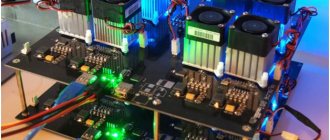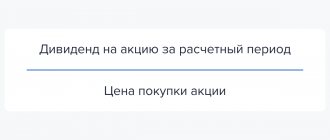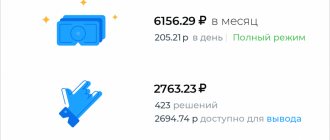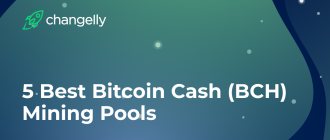Determining a cryptocurrency mining pool
There are a lot of people who mine popular cryptocurrencies. The complexity of crypto mining has increased so much that it requires very productive calculations, which in most cases cannot be done independently - in solo mode. At the same time, if the user has free computing power that is insufficient for solo mining, then he can donate it to the pool for joint mining and also receive a reward for this.
Combining the power of miners in pools allows you to increase the probability of finding blocks and make earnings from mining more predictable. Btc mining pools perform the functions of computers that have the total computing power of all participants connected to it.
A mining pool can theoretically be created by anyone who has a server. But for high profitability of the newly created pool, you need to have enough total mining power. This is easy to achieve for coins with low mining difficulty, which are of little interest and therefore not profitable. For popular coins, you either need to have your own good power, or many miners connected to the server.
About the pool
A mining pool is a website through which the power of the equipment of all participants in the pool is added up, and blocks for various coins are solved and created.
Remuneration to participants is distributed in proportion to the capacity involved.
Zpool offers 36 algorithms and 290+ currencies for mining. Its distinctive feature is that you receive payments automatically, and you can receive payments in BTC.
This is both a plus and a minus of the pool, since Bitcoin is the only guaranteed currency. You can receive payments in the currency that you mine on the pool, but it is not a fact that this coin will be credited to you.
The conversion of the coin you mined into Bitcoin also takes place on the exchange. We will list the list of exchanges when we talk about the Zpool interface.
Another feature of this pool is that you can configure automatic switching of mining between the algorithms you select. Zpool will automatically switch between most profitable algorithms.
How does a mining pool work?
Mining pool coordinates the work of workers - individual devices or farms connected to it. Earnings in it can be compared to a lottery: if you buy a ticket alone, the chance of winning will be less than if all your relatives buy tickets. The pool operates a system of fair remuneration for each participant.
Mining pool functions :
- accepting hashes from participants;
- search for a reward for generating a block;
- maintaining statistics of the work of each miner.
- distribution of rewards between participants.
To mine as part of a pool, the user must run specialized software rather than a Bitcoin client.
Reward distribution methods
Each pool has its own reward distribution system. Most schemes work taking into account the so-called "ball". Share is not yet a solution to finding a block, but one of its options. The more shares a particular miner searched before a block was found, the larger share of the reward he will receive.
A simple payment distribution option is the pay-per-balloon (PPS) model. Only the rates paid per ball can change - for example, the total maximum pay per ball (SMPPS) or the expressed total maximum pay (ESMPPS). Also, the mining pool may or may not use payment priorities.
Other possible distribution methods:
- Proportional. All balls are equal, but their value is calculated at the end of the block search round.
- Older round balls weigh less than newer ones. This will prevent those who want to game the system by switching between pools during a round to increase their chance of profit. This scheme was first used in Slushpool.
- P2P pool. The responsibilities of the server are decentralized, miners perform operations on a blockchain called “share-chain” and mine blocks at a lower difficulty. When a block is created, it is transferred to the blockchain and the reward is distributed among the miners. P2p pool involves launching a full blockchain node.
- The principle is similar to proportional, but the reward is calculated not on the basis of all shares in the round, but on the basis of a certain number of shares. The shorter the round, the more income miners receive.
There are several other methods, more complex and rare. The transaction payment system also depends on them.
The most common is PPS; with this method, payments to pool users include the block reward and a share of transaction commissions, based on network congestion.
Bitcoin mining pool:
- Pool.BTC.com is the world's leading blockchain and cryptocurrency team. The BTC.com mining pool was founded in 2016. It has more than 10E/PH hashrate and supports different coins (BTC, BCH, ETH, LTC, etc.). The pool provides many services that guarantee high user income and security.
- AntPool is a Chinese system. Has 18% of all computing power units in the world. There is support for a Russian-language interface. Payment - in different ways. Withdrawal of funds without paying a commission.
- ViaBTC is a Chinese multi-cryptocurrency mining pool. Supports Russian language. In terms of mining Bitcoin blocks, the pool is second only to the top representatives of the industry (AntPool, BTC.TOP and BTC.com). At the same time, he periodically displaces one of them from the top 3 when he finds the next block. Three types of cryptocurrency accrual systems are supported: PPS+, PPLNS, SOLO.
- Poolin , a global online platform, has become a Top1 hashrate mining pool in terms of BTC, LTC and ZEC. Poolin supports mining of several cryptocurrencies including BTC, ZEC, LTC, ETH, DCR, DASH, CKB, BCH, BSV. An accurate profit calculator, privacy-protecting observer mode, and comprehensive mining rig management make mining hassle-free.
- NovaBlock is a mining pool from North America. High security and stability. Favorable reward system. “NovaPPS +” is a guaranteed reward system for users who paid for the promotion. Unlike PPS, NovaPPS+ pays transaction fees. The reward for NovaPPS+ users is 10% higher than those who use the PPS reward system.
- P2Pool is a decentralized pool, each node of which is a component. No registration required. The only pool with 100% protection against DDOS.
- Bitfury has centers in Iceland. The pool earns digital currency; strangers are not allowed into the system. Control of 15% of the Bitcoin system.
- BTC China is a Chinese development without a Russian version, it occupies from 10 to 13% of all units of computing power.
- BW Pool - Server from China, takes up 9% of the system. Payment is made through the PPLNS network, there is no commission.
- Kryptex is a program for computers. The profitability of mining depends on the computer used, as well as on the current Bitcoin exchange rate. You can withdraw earned funds through payment systems QIWI, Webmoney, Yandex Money, as well as by direct transfer to a Bitcoin wallet or bank card.
- HashCity is a multi-currency mining pool created by a group of crypto enthusiasts. The pool operates according to the PPS system - payment for each share. There is no need to guess whether the pool will find a block or not, you will receive a reward in any case. Rewards are awarded every 5 minutes; the complete transaction history for the entire period can be found in your personal account. Supports 11 coins for mining: Ethereum (ETH), Monero (XMR), Ethereum Classic (ETC), ZCash (ZEC), Bitcoin Gold (BTG), Bytecoin (BCN), Callisto (CLO), Moac (MOAC), Prl ( PIRL), DubaiCoin (DBIX), Lethean (LTHN). There is an affiliate program with 10% of the pool income from your referrals.
- MinerGate is a popular and profitable crypto pool where you can mine not only bitcoins, but also other cryptocurrencies. For example, ethereum, dash, monero, zcash and others. The program is installed on your PC and automatically produces cryptocurrency. Everything you have mined can be withdrawn to an exchange or personal wallet. The service commission is 1.5% of the amount.
- MiningRigRentals is an English-language resource that offers miners to rent “drilling rigs” and mine bitcoins with their help. The service appeared recently - in 2014, but has already won the gratitude of miners from all over the world. Available statistics, as well as a small commission, make this service very attractive for miners.
- NiceHash is the largest mining pool. Buyers have access to greater power for cloud mining on all major algorithms. You can also install the program on your PC and mine coins on your equipment.
- Minerall is a multicoin pool in Russian and English. BTC, ETH, ZEC, ETC, RVN, BCH are available for mining. There are detailed instructions for setting up miners. Auto-payment settings are available for registered users.
- SlushPool is the world's first mining pool. Industry leader in operational transparency and innovation. Since 2010, more than 1.25 million BTC have been mined. From 2022 you can mine Zcash. The head office is located in the Czech Republic.
- Zpool is an American mining service. Withdrawal only works in Bitcoin. Exchange operations occur automatically. The service script is unique and you do not need to register with it.
- F2Pool is a Chinese service, operating since 2013, the only one that practices the PPS payment system. This resource currently holds about 1/5 of the entire network hashrate. The service recommends immediately withdrawing money from your accounts, since everything that remains there after 90 days goes to the development of the pool.
Pool for Ethereum mining:
- 2Miners - Multi-currency mining pool that uses Ethash/Equihash algorithms. Includes joint and solo pools, differing in the payment system and commission charged (PPLNS - 1%, SOLO - 1.5%). Users renting power from the Nicehash service can use a separate port, which is based on the stratum protocol, guaranteeing 100% compatibility. Telegram bots monitor the operation of farms and ensure the delivery of alerts about found blocks. 2Miners is a very understandable system for a Russian-speaking user.
- Sparkpool is a Chinese pool, you can mine Ethereum, Beam and Grin. You can register for the pool using your phone number. There are detailed instructions for setting up miners and the ability to track the mining process.
- Ethermine is the largest Ethereum mining pool, with almost 1/4 of all miners of this cryptocurrency registered. Commission 1% + 0.001 ETH for payouts of less than 1 ETH, no commission is charged for payouts of more than 1 ETH.
- NanoPool is a reliable pool for Ethereum mining. Registration is not required. Commission 1%, no commission is charged for payment.
- Dwarfpool is a multi-currency pool with a reward system HBPPS (one of the varieties of PPS). Features: low commission (1%), optional registration. There is no payout fee.
- Suprnova is a multi-currency platform. Commission 0% + commission 0.001 ETH per payout. The applied reward system is PROP. To connect, an account is created, the mining program is downloaded, settings are made and the address for transferring cryptocurrency is indicated.
- CoinMineETH is a reliable pool for Ethereum mining with a simple interface and detailed statistics. The payout threshold is 0.1 ETH. Principle of payment of remuneration PPLNS. Registration is not required.
For a novice miner, MinerGate will be a convenient pool, since it is one of the most profitable crypto pools, which has convenient management of a cross-platform miner and the possibility of combined mining. It is compatible with all crypto miners.
Few services can boast such a level of development as MinerGate. In addition, this is the first pool to offer combined mining, when you can generate several coins at the same time, without reducing the hashrate.
A direct pattern: the more powerful the hardware, the more coins it will accumulate, and the earlier you start mining, the more successful it will be.
Which pool to choose for mining
A Bitcoin mining pool must provide income. An insufficiently powerful pool is unlikely to be the first to find a block, and you will have to wait a very long time for profit.
Before choosing a platform, you need to obtain reliable information about its power, as well as study the rules for distributing and receiving rewards.
6 basic questions that need to be answered before joining a mining pool :
1. What do you offer?
Each pool makes demands on potential participants, or rather on the power that their PCs have. Therefore, first assess your real capabilities. If the power of your computer is small or you are using an outdated video card, then your contribution to the pool will be small, and the profit will be corresponding.
2. How is profit distributed within the pool?
The option when the reward is distributed equally among the pool participants, regardless of their contribution, is extremely rare. Typically, profits are distributed in proportion to the contribution of each participant in mining. If the mining pool you are interested in adheres to this particular reward sharing system, then the amount of profit will depend on your personal contribution to the development of the block.
3. How is remuneration paid?
Different services provide different ways to withdraw profits, many of them offer several options to choose from. Withdrawal currencies may differ.
4. Compare the pool hashrate with the difficulty of the coin.
In the context of earnings, power is the main characteristic of a profitable pool. The more often the pool finds blocks, the higher and more stable the earnings of each participant will be.
Before you start mining a specific coin, you can find out how long on average the pool will search for a block. To do this, divide the difficulty of the coin by the hashrate of the pool.
5. Check the ping to the pool.
Ping is the delay in data exchange between the miner and the pool.
The solution that the miner is looking for is only suitable for the specific current block of the network. The block changes - pool sends a new task to the miner. With a high ping, the miner will receive information about a new block with a delay. Therefore, the lower the ping, the better.
The proximity of the pool also affects the ping value: the closer the server is located, the lower the ping will be.
The delay time depends on the quality of the Internet connection. When using 3G and LTE, the latency is higher than through wired Internet. Sometimes miners show a ping after each decision made by the pool, and, as a rule, these are honest numbers.
A figure less than 100 ms is considered normal, and 0 ms is ideal.
6. Estimate the minimum payout.
Study the withdrawal limits so you don't have to wait months for your payment. It is best to choose pools that allow you to withdraw profits daily or even several times a day.
Payments
BTC is the only guaranteed payout currency, but you can set up payouts in the currency you mine (however, it is not a fact that it will be transferred to your account).
BTC payouts are processed once a day for balances above 0.01, for balances over 0.0025 payouts occur several times a week.
Payments for all other currencies are made automatically every 2 hours for all balances above 0.05, for balances above 0.0125 payments occur once every day.
There is an initial delay before the first payout, as the coins you mined must be converted through the exchange and returned to the pool. Usually the first payment comes no later than 24 hours after the start of mining on Zpool. If this does not happen, contact support.
How to create your own mining pool
Is it really possible to create a pool yourself and not give part of the money earned to the server owner?
To create your own pool for cryptocurrency mining, you need to have specialized knowledge and skills, as you will need to write software. It is not recommended to take a ready-made solution from the Internet: its reliability should not be in doubt.
Therefore, there are two options: either you understand this yourself, or you attract specialist developers and invest financially in it.
For a mining pool to become popular and bring in money, it must have good computing power and the trust of miners.
Consider the costs of pool promotion, marketing and advertising, which will make up a significant portion of the budget. To stand out among competitors, you need to offer miners something unique that other services do not offer, and constantly maintain their interest.
The creation of a mining pool occurs in several stages:
1. Installation of the miner.
A miner is a program designed for mining cryptocurrencies. Among the most universal miner programs are Claymore, Ethminer, CGMiner, Bitminter and others.
2. We are looking for information to connect to the pool.
To connect to the pool, the miner program will request data from the pool server. This information can be found on the pool website.
3. Set up the miner program:
- download the archive with the program to your computer and look for the start file with the .bat extension;
- open the file in notepad and copy the connection data from the pool site into it;
- in the copied part of the text in fragments we indicate the address of our wallet and the name of the farm.
4. Start the miner.
After changes in the bat file, you can start mining → start.bat.
Mining setup
Before you start setting up mining, you need to decide on the coins that you want to mine.
Step 1. Select coins
You can read detailed reviews of the most popular coins on our website
To select a coin and view pool statistics by coin algorithm, select the algorithm in the table on the main page of the pool - it will light up (highlight) in color.
Next, you can view all sections of the site that we described above.
Step 2. Create a wallet
Since all withdrawals of mined coins occur automatically every 2 hours, you need to create a digital wallet to which your coins will be transferred.
You can create a wallet on any convenient exchange - you can read reviews of exchanges on our website. If you do not trust the exchange or do not want to register, you can install and synchronize a cold wallet for the selected coin.
Also, for many coins there are official web wallets and mobile wallets - here you choose which one is more convenient for you.
Step 3. Download the miner
For the coin you are going to mine, you need to download a miner - a program for mining cryptocurrency.
After you have decided on a coin, you can go to the “Miners” section and see the most popular miners.
Step 4. Configure the bat file
On the left side of the main page there is an example of setting up a Bat file for the Zpool pool.
This is what a fully configured Bat file looks like for the Dinero coin (chosen as an example, all others are created by analogy):
@echo off title neoscrypt (dinero) — zpool pool CryptoDredge -a neoscrypt -o stratum+tcp://neoscrypt.mine.zpool.ca:4233 -u DAGsXmZEsJckRZisWn2AQh4xixeBA6fDHA.rig -pc=DIN pause
Let's look at each symbol in detail:
CryptoDredge is the name of the miner for the coin shown in the example. If another miner was needed, for example SGminer, then it would be indicated.
-a neoscrypt – indicate the name of the algorithm. If the coin works on a different algorithm, we write another one accordingly.
-o stratum+tcp://neoscrypt.mine.zpool.ca– this line is unchanged to configure any coin on the Zpool of the neoscrypt algorithm. In the case of coins that work on other algorithms, indicate a different, desired algorithm.
:4233 is the port of the algorithm - it is the same for all coins of this algorithm - you do not need to look for it for each coin.
You can find the port number in the table opposite the selected algorithm on the main page of the site:
-u DAGsXmZEsJckRZisWn2AQh4xixeBA6fDHA – your wallet address, for statistics and sending coins.
-pc=DIN – coin symbol. It is written as indicated on the website, in capital letters. To find out the symbol, you need to click on the coin algorithm on the main page and scroll down to the list of opened coins for this algorithm.
In our example, this is NeoScrypt.
That's it, the setup is complete, all that remains is to close the text document in which the setup took place and save it.
Next, launch the configured Bat file with the left mouse button. The mining process has started.
Note! You can pool Bsod on our website.
Step 5. Withdraw received funds
All withdrawals of mined coins occur automatically once every 2 hours.
Calculation of profit from mining
Calculators are used to calculate profits. There are many of them on the Internet. Many servers have their own calculators.
To calculate potential profit, you need to:
- Open any browser and go to the selected calculator.
- Select the desired “coin” (ETH, NRG, etc.).
- Enter the hashrate for a specific algorithm (or hardware, if the calculator supports such an option) into the line.
- Fill in the line with the energy consumption of the equipment.
- Select a time period.
- Set the correct network complexity values (not all calculators update this indicator in real time).
Common problems
Problems that may arise when mining cryptocurrencies:
- Connection instability and loss of connection (constant reconnections).
- Reduced hashrate when installing new drivers (may occur when using older versions).
- Incorrect configuration of the miner (for example, problems often arise when setting up the bat file).
- Overheating of equipment (refers to technical problems).
- Release of a new version of the miner and reduction of the maximum hashrate.
Site interface
Before we start working with the pool and setting it up, we will analyze the site interface so that you can better navigate. The main page looks like this:
1 – Pool sections:
- Zpool – go to the main page of the pool
- Pool – information about the coins of the selected algorithm and statistics on them.
As follows:
You can select the algorithm you are interested in in the table on the right side of the page.
On the left side there is a table with information about the coins of the selected algorithm:
- “Amount” - reward (number of coins) for a solved block. It is divided among all miners - network participants who mine this coin.
- “Block” — the number of the current block of the selected coin.
- “TTF” is the average time it takes the pool to solve a block. It depends on the hashrate at the moment. The variable is constantly changing as the number of active miners is constantly changing.
- “Hash” is the total hashrate of the mining pool for the selected coin. Updated every 5 minutes.
- “Profit” - 24 hour assessment of network complexity
Below are the graphs. Let's pay attention to graph 2 “PoolHashrate” - the hashrate of the pool of the selected coin over the last 24 hours.
On this graph you can track the behavior of network participants mining this algorithm.
- Wallet is statistics of the coins you have mined for a specific wallet.
Here you can track the mining process and the status of the coins you received: active and transferred or being processed.
Since the pool sends coins automatically, the Bat file specifies the wallet address where to send coins.
To access the wallet statistics, you need to insert the address of your wallet, which you indicate in the bat file, into the appropriate column in the “Wallet” tab:
Afterwards information about mining will appear:
- Balance – Your balance – how many coins there are.
- Total Unpaid – total unpaid coins.
- Total Paid – total paid.
- Total Earned – how much has been earned, taking into account unconfirmed coins
Your hashrate is displayed below. Be careful: it may differ quite a bit from the numbers in the miner. A slight discrepancy is normal.
- Graphs – graphs of hashrate changes for the selected algorithm are displayed here. All changes are in BTC equivalent
- Miners – in this tab you can see the rating of miners used on the pood:
The rating is based on the number of pool participants who use this program. Thus, the CCminer/2.2.3 miner is used by 79 people – it ranks 1st in the ranking.
- FAQ – here you can read answers to the most popular questions
2 – Time until next payment
Since payments happen automatically, you can always go to the pool website and see how much time is left until the next payment.
3 – About the pool and payments
Here you can find information about the pool and the frequency of payments to network participants
4 – List of algorithms available for mining
For each algorithm it is indicated:
- Port – port
- Coins – the number of coins available for mining
- Miners – the number of network participants mining the coin
- Hashrate – overall hashrate of the algorithm
- Fees – commission
5 – Setting up a bat file
Here is an example of setting up a batch file for several of the most popular miners in the pool. We will look at this point in more detail a little later.
6 – List of exchanges where the coin you mined is exchanged for BTC
See descriptions of exchanges, their pros and cons
- Bittrex
- Crypto-Bridge
- Cryptopia
- Poloniex
- QuadrigaCX
- KuCoin
- Yobit
- NovaExchange
7 – Listing coins of the selected algorithm available for mining on the pool
8 – Useful links
BitcoinTalk - https://bitcointalk.org/index.php?topic=1751272.0 API - https://www.zpool.ca/site/api Difficulty - https://www.zpool.ca/site/diff Algo Switching - https://www.zpool.ca/site/multialgo
9 – Hash for rent 10 – Latest posts from Twitter
